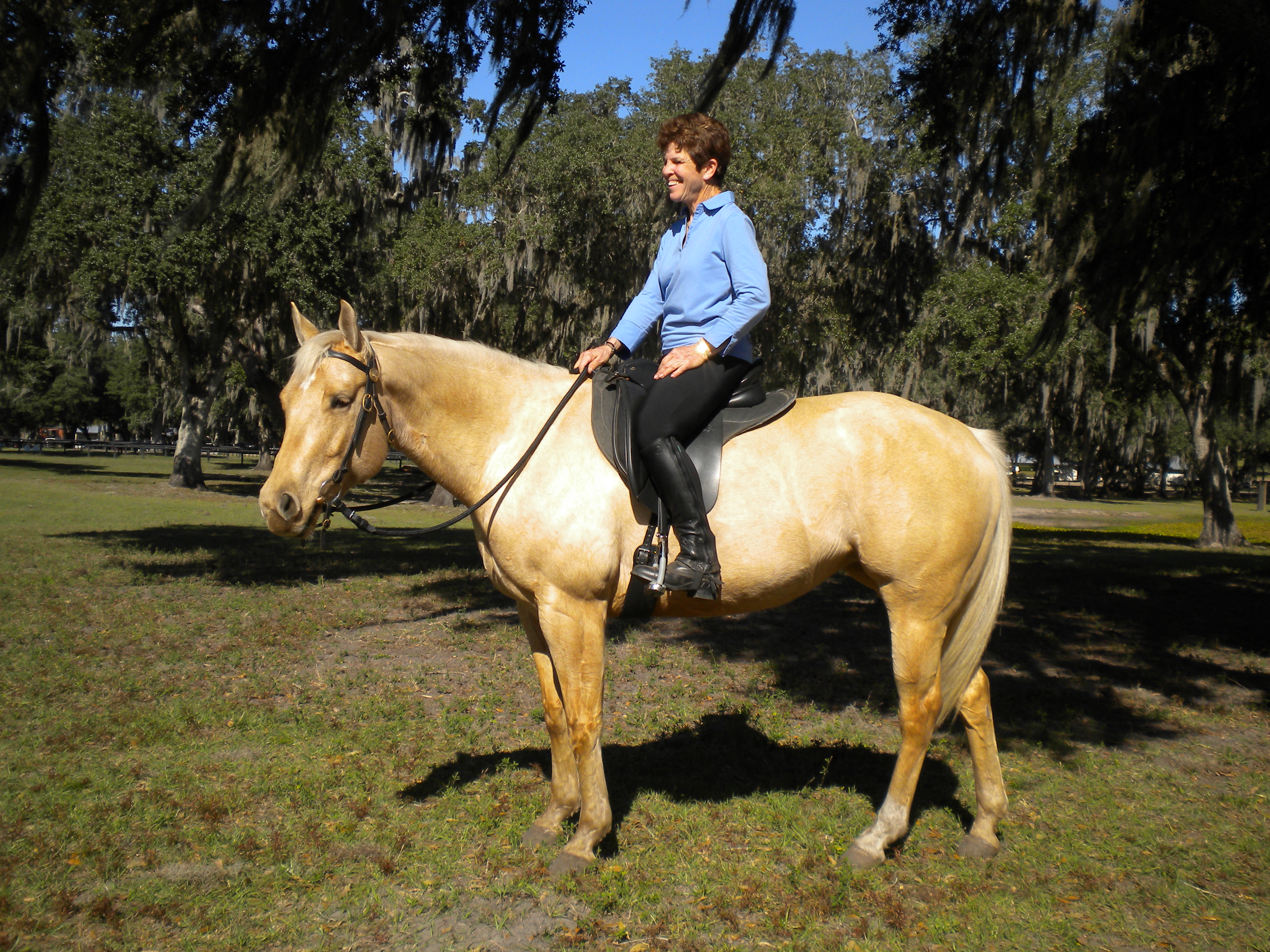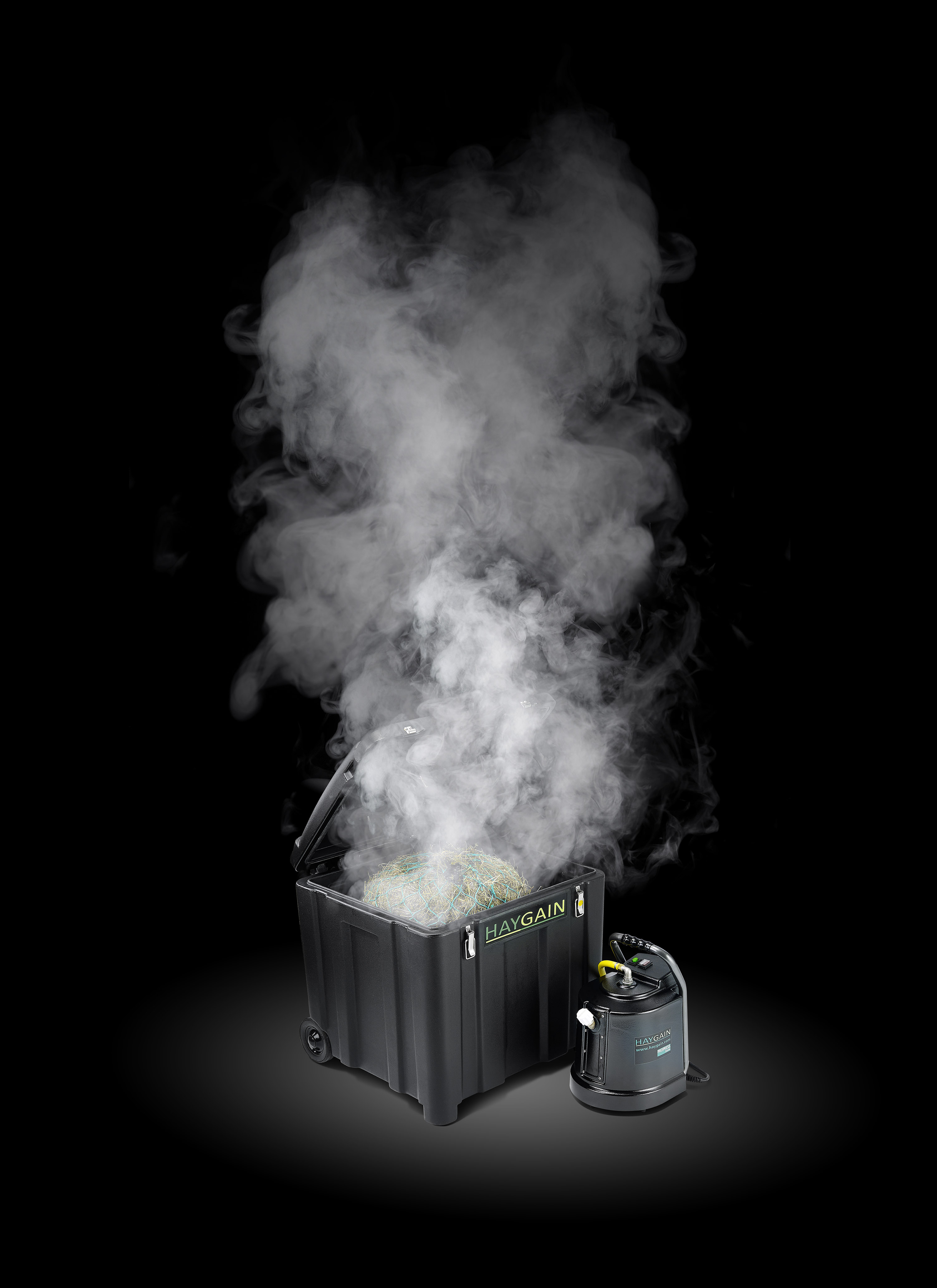Steamed hay “changed everything”, says initially sceptical owner
By Kim F Miller
“I could not imagine that any sane person would go buy some gizmo to steam hay.”
Tennessee horse owner Dr. Jean Lewis has changed her tune since making that statement a few years ago. The retired university dean is not stingy when it comes to her horses’ care, but she felt there had to be a better way to help solve her Quarter Horse mare Coconut’s worsening respiratory problems.
For three years, Jean tried everything. She started with low-dust bedding, buying the best possible hay and other common-sense stable management measures. She tried antihistamines, supplements and nebulized medications. Jean was confident she’d systematically tried everything possible to help her horse. The only exception was the hay steamer that Coconut’s vet had recommended twice, but just didn’t seem to make sense at the time.

Then came Jean’s “come to Jesus” moment in the form of following the vet’s orders to soak Coconut’s hay to reduce dust and allergens. “That lasted for a week,” Jean states. “Attempting to pick up a net of wet hay that seemed to weigh 4,000 pounds – and plunging my hands into ice cold water when it’s getting cold outside…”
The hassles were untenable—not to mention the fact that soaking hay is far less effective than steaming for removing the airway irritants that irreparably harm the respiratory system.
She gave into the suggestion that initially seemed crazy. “I bought a steamer as a Christmas present to myself,” Jean recounts. But it’s Coconut who received the gift’s biggest benefits. In the year that the mare’s been on Haygain steamed hay, she has not required any of the corticosteroids, supplements or other medications used over the preceding three years to manage her condition.
Early Warnings
Coconut had an occasional, mild cough when Jean purchased her in Colorado. “I knew she had some kind of a breathing issue because otherwise I could not have afforded her.” That worsened and additional symptoms arose once the mare settled into Jean’s home stable in northern Tennessee’s Oneida. “Along with beautiful mountains, one of our claims to fame is the worst possible allergy conditions in the country.”

Coconut’s mild cough became more frequent and not-so-mild, her nose filled with gunky discharge and she needed to rest and recover her breath after exertion. Scariest of all, she suffered an occasional palate displacement. When the latter condition was diagnosed by Coconut’s local veterinarian, Jean took the mare to the University of Tennessee’s renowned College of Veterinary Medicine for a thorough assessment.
Jean expected the recommendation of a relatively simple surgery to correct it. Instead she got the news of full-blown Equine Asthma as the root cause of the displacement. Conditions on the Equine Asthma Spectrum can’t be cured, but they can be managed and Coconut’s had to be gotten under control.

Excessive coughing caused her palate displacement. In this condition, the palate flips up and obstructs the trachea – restricting the horse’s air supply. There’s also the risk of aspirational pneumonia brought on by the inhalation for foreign material into the lungs. “Not every horse with asthma will have that problem, but the potential is always there,” Jean explains.
University of Tennessee’s Dr. Melissa Hines, DVM, PhD, DACVIM, had twice suggested the Haygain Hay Steamer. Until the asthma diagnosis, Jean thought the expense of the half-bale HG600 model she eventually purchased was not a worthwhile investment.
Hindsight math indicates otherwise. “It’s so well made, I know it’s going to last 10 years”. Before switching to steamed hay, Jean had come to recognize the first hints of Coconut’s asthma flare-ups. In the early stages, nebulized albuterol tamed the related inflammation in the upper airways. When the inflammation gets in the lungs, however, corticosteroids are necessary. Neither medication is cheap, especially when needed with increasingly frequency and duration. Fairly quickly, the price of the medication path would have exceeded that of the steamer.
Even before her hay soaking epiphany, Jean worried about the health consequences of Coconut being on corticosteroids for sustained periods. Not to mention the logistical challenges of regularly administering treatments along with caring for a menagerie that includes another horse, two mules and a donkey – by herself.
“I’m not a big time show rider,” Jean concludes. “I’m a retired university dean who meticulously tried to do everything I could for my horse.” She stands corrected on her initial scepticism. “The hay steamer has changed everything.”

















